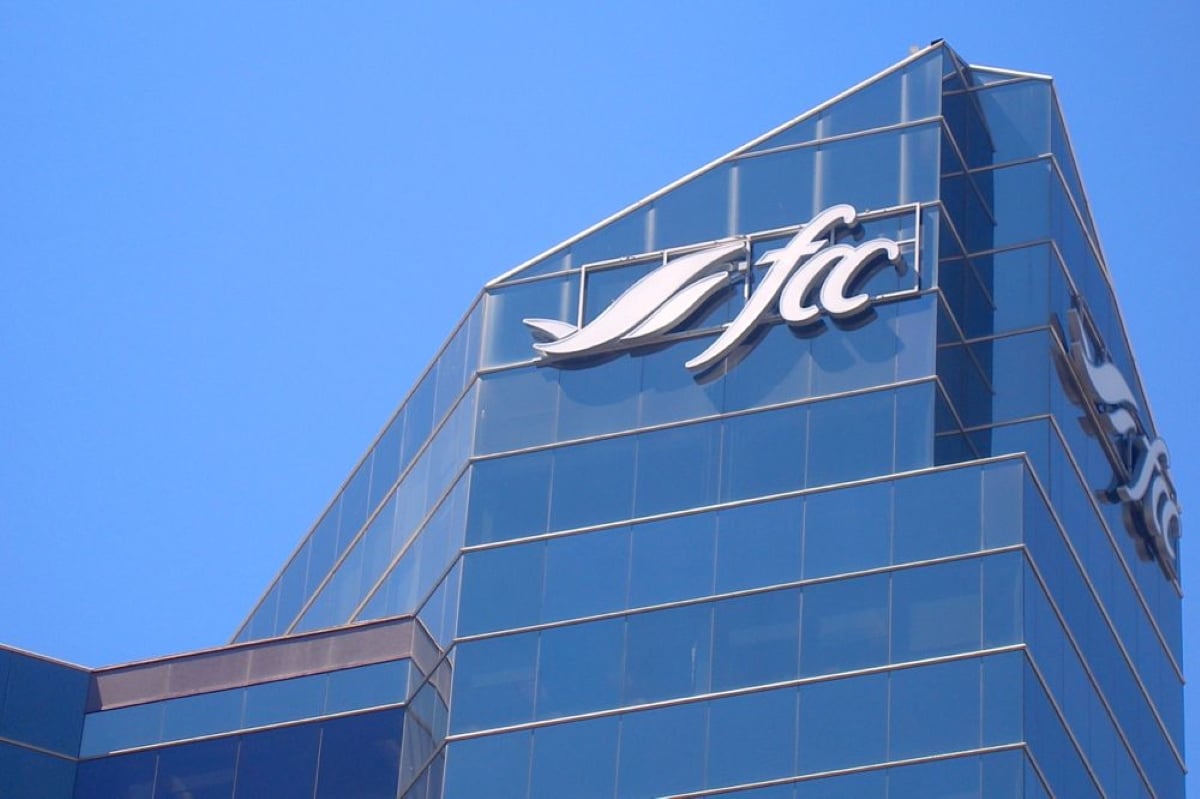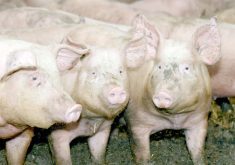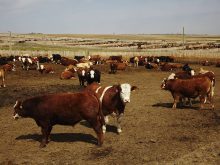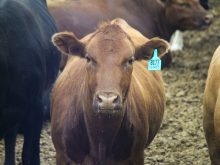Saskatchewan feedlot infrastructure took a beating last year, and operators say it will take years to recover.
The wet conditions forced them to reduce stocking densities, resulting in lower revenue and a delay in recovery, said Brad Welter, cattle manager at the 28,500-head Pound- Maker feedlot near Lanigan, Sask.
He said capacity dropped by 35 percent at Pound-Maker because pens were too muddy. Manure that should have been removed last fall was piled because there was nowhere to spread it.
More pens became available after freeze-up but that is about to end.
Read Also

Lending policy still focused on primary producers: Farm Credit Canada
Farm Credit Canada said it has not changed its business practices and remains committed to supporting all producers, after a report from an Ottawa-based media outlet claimed otherwise.
“We’ve got to reduce numbers in a huge way before the spring breakup because we’ve got all that leftover manure that we couldn’t get out,” he said.
“It just going to cause even more problems in the spring when the winter manure is added to it.”
At Plains Livestock near Porcupine Plain, Sask., manager Bruce Edwards said the 10,000-head lot is at 8,000 head right now. Last summer it was only a quarter to a third full.
“It was maybe a blessing that we didn’t have a whole lot of cattle,” he said. “At least we could move the cattle around.”
Edwards said conditions were so bad that cattle were sinking down into the clay base in each pen.
Welter agreed that most pens will have to be re-landscaped because the clay eroded. That will be one of the biggest costs facing feedlots.
“It could be a long time coming,” Welter said.
“Things have to be cleaned out, dried out and new clay and fill will have to be hauled in, packed in and re-landscaped.”
Concrete feed aprons and water bowl pads are eroding and breaking off. Fencing sat in mud too long and needs fixing.
“We’ve lost all our gravel in our feed alleys,” added Edwards.
Bale damage and waste was significant, and more bedding is needed to keep cattle content and healthy.
Yardage costs will have to increase.
Welter said a survey of feedlot operators in Saskatchewan found the problem is widespread.
Most are coping because the ground is frozen, but the spring thaw is just weeks away. Operators are nervously eying the calendar and their manure piles.
“We’re going to have some issues,” said Welter. “This backlog of manure is not going to be fixed in one year. We’ve got several years of catching up to do.”
Edwards said his costs of dealing with manure have probably tripled.
“We touched it three or four times with a track hoe,” he said. “It’s piled in fields, not even spread, so we’re going to have to touch it again. It takes cash flow to remove all that manure.”
Some manure will be composted and spread later, but no one knows when that will happen.
Manure isn’t the only concern. Runoff holding ponds that are supposed to empty through evaporation are full.
“We’re going to have all this new runoff so they’re going to overflow,” said Welter.
Andy Jansen, manager of agricultural operations for the provincial agriculture ministry, told the Saskatchewan Cattle Feeders Association annual meeting in January that the government wants to know as soon as possible if an intensive livestock operation anticipates problems this spring.
He said holding ponds designed for a one-in-50-year or one-in-100-year event are likely maxed out after last year’s rainfall.
A large spring runoff and manure piled on a high water table could present challenges.
“We’re into what I would call unique conditions, where producers may not have been able to manage their operations the way they usually do,” he said in an interview. “I would rather know about them now.”
The ministry’s role is to evaluate the risk and offer advice, he added.
Edwards said there aren’t many options. The ponds will have to be pumped onto land owned by the feedlot, but it is already saturated.
Individuals and some businesses qualify for help under the Provincial Disaster Assistance Program, but larger feedlots don’t qualify because their gross revenues are too high.
Under the assistance program, small businesses must earn at least $6,000 but no more than $2 million.
Welter said some operators have told him they won’t be able to rebuild or make repairs.
“That’s disappointing,” he said. “I think that over time a lot of this will get rebuilt and repaired and replaced but it’s going to take some time and some money to do it. In my mind it won’t all be rebuilt without some help.”
Agriculture minister Bob Bjornerud said he has heard the concerns and is looking for ways to help. He suggested changes could be made to the disaster assistance plan’s cap.















